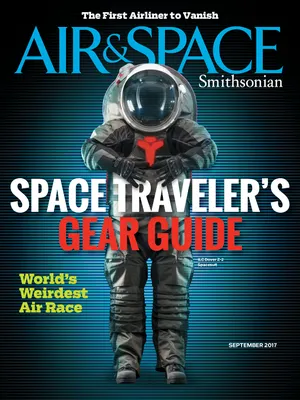The Great Soviet Crescent In the Sky
A cold war mystery.
:focal(1650x930:1651x931)/https://tf-cmsv2-smithsonianmag-media.s3.amazonaws.com/filer/44/65/446529cf-b733-457a-ac2b-f1fde22f152a/18a_sep2017_oo_spot_live.jpg)
Starting in March 1967, when the Space Age was less than a decade old, skywatchers from Ukraine to the Caucasus Mountains were repeatedly treated to a spectacle. Six times over a six-month period, hundreds of thousands of Soviet citizens saw a strange crescent shape move across the sky in total silence.
Each time, the phenomenon was identical. The crescents moved west to east, convex edge forward, accompanied by smaller “sparks.” To some observers they were about the same angular size as the moon; others, farther north, reported them as much larger. They always appeared close to sunset, as afternoon transitioned into evening. After the sixth visitation, the crescents stopped appearing, just as mysteriously as they began, and never resumed.
The Soviet press speculated that they were UFOs. Amateur groups sprang up across the country to begin collecting and distributing eyewitness reports. The news quickly spread outside the U.S.S.R. and around the world, and within a year the sightings were mentioned in a U.S. Congressional hearing.
But there was a clue that connected the crescents to human space activities. On the same dates of the sightings, Moscow had launched Kosmos “scientific research satellites” (years later, each of the mysterious crescents was noted to have occurred about 95 minutes after that day’s launch—long enough for one orbit around Earth).
In November 1967, without any reference to the crescents, the U.S. Department of Defense made a startling accusation: The Kosmos launches were part of a new Soviet nuclear strike weapon, designed to put a warhead into low Earth orbit and then deorbit it over a target half a world away.
The timing was delicate. The United States and the U.S.S.R. were putting finishing touches on the Outer Space Treaty, which outlawed nuclear weapons in orbit, and the appearance of a system designed to do exactly that threatened to scuttle years of diplomacy.
The launches were timed so that the warheads were lit by the sun but observing cameras were shaded. Somebody in Moscow finally realized what these UFO reports really were and abruptly restricted media reporting, with no further official word about the “Kosmos” launches. In hindsight, if they had known what they were looking at, the UFO watchers’ reports would have revealed details of the propulsion that guided the dummy warheads to their targets at Kapustin Yar. Later test flights were launched at random times of day, so no evening apparitions were created.
The Soviets named the strike missile R-36Orb—a variant of an intercontinental ballistic missile known to the West as the SS-9 Scarp—and a handful were eventually installed in silos, but withdrawn in 1983 after the SALT II treaty definitively banned them.
Just why a descending nuclear warhead should produce a wide crescent-shaped wake was a mystery to the public for many years, though the CIA almost certainly knew the answer.
In September 2015, a SpaceX Falcon 9 launched from Cape Canaveral in Florida; after releasing the second stage, the first stage flipped over, fired its engine to slow down, and for the first time landed on a platform in the Atlantic Ocean. Infrared images of the nighttime descent showed a distinct crescent shape ahead of the vehicle as exhaust particles, released in space, entered the atmosphere and bunched up. The striking similarity to the 1967 Russian apparitions made clear what they were: the exhaust from retrofiring rockets.
Following the collapse of the U.S.S.R., details about the R-36Orb began spilling out. Now we know what really happened: Top-secret space weapons tests were mistaken for alien visitors.
